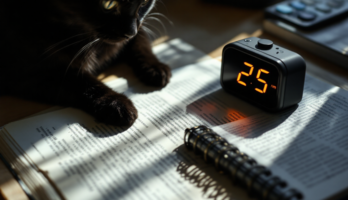Диссертация (1139574), страница 36
Текст из файла (страница 36)
Międzybrodzki, S. Letkiewicz, M. Łusiak-Szelchowska, A. Górski // FrontMicrobiol. – 2017. – № 8. – Р. 1-11.265. Jugeau, S. Induction of toll-like receptors by Propionibacterium acnes / S. Jugeau,I. Tenaud, A.C. Knol, V. Jarrousse, G. Quereux, A. Khammari, B. Dreno // Br J.Dermatol. – 2005. – №6, Vol. 153. – Р. 1105-1113.266. Kang, S. Inflammation and extracellular matrix degradation mediated byactivated transcription factors nuclear factor-kappaB and activator protein-1 ininflammatory acne lesions in vivo / S.
Kang, S. Cho, J.H. Chung, C. Hammerberg, G.J.Fisher, J.J. Voorhees // Am J. Pathol. – 2005. – №6, Vol. 166. – Р. 1691–1699.239267. Kang, S.S. Toll-like receptors: applications to dermatologic disease / S.S. Kang,L.S. Kauls, A.A.Gaspari // J Am Acad Dermatol. – 2006. –№ 6, Vol. 54. – P. 951–983.268. Kawasaki, T. Toll-Like Receptor Signaling Pathways / T. Kawasaki, T. Kawai //Front Immunol. – 2014. – № 5. – Р. 461.269.
Kelhala, H.L. IL-17/Th17 Pathway Is Activated in Acne Lesions / H.L. Kelhala,R. Palatsi, N. Fyhrquist, S. Lehtimaki, J.P. Vayrynen, M. Kallioinen, M.E. Kubin, D.Greco, K. Tasanen, H. Alenius, B. Bertino, I. Carlavan, B. Mehul, S. Deret, P. Reiniche,P. Martel, C. Marty, U. Blume-Peytavi, J.J. Voegel, A. Lauerma // PLoS One. – 2014. –№8, Vol.
9. P. 1-18.270. Kelhala, H.L. The effect of systemic treatment on immune responses and skinmicrobiota in acne / H.L. Kelhala // University of Oulu Graduate School; University ofOulu, Faculty of Medicine Acta Univ. Oul. D 1385. – 2016. University of Oulu, P.O.Box 8000, FI-90014 University of Oulu, Finland. – p. 98.271. Kelhаlа, H.L, Isotretinoin treatment reduces acne lesions but not directly lesionalacne inflammation / H.L. Kelhаlа, N. Fyhrquist, R. Palatsi, S. Lehtimäki, J.P. Vаyrynen,M.E. Kubin, M. Kallioinen, H.
Alenius, K. Tasanen, A. Lauerma // Exp Dermatol. –2016. – №6, Vol. 25. – Р. 477-478.272. Kelhala, H.L. Isotretinoin and lymecycline treatments modify the skin microbiotain acne / H.L. Kelhala, V.T.E. Aho, N. Fyhrquist, P.A.B. Pereira, M.E. Kubin, L.Paulin, R. Palatsi, P. Auvinen, K. Tasanen, A. Lauerma // Exp Dermatol. – 2017. – №1,Vol.27. P.30-36.273. Khodaeiani, E. Topical 4% nicotinamide vs. 1% clindamycin in moderateinflammatory acne vulgaris / E.
Khodaeiani, R.F. Fouladi, M. Amirnia, M. Saeidi, E.R.Karimi // International Journal of Dtrmatology. – 2013. – №8, Vol. 52. – Р. 999-1004.274. Kim, J. Activation of Toll-Like Receptor 2 in Acne Triggers InflammatoryCytokine Responses / J. Kim, M-T. Ochoa, S.R. Krutzik, O. Takeuchi, S. Uematsu, A.J.Legaspi, H.D. Brightbill, D. Holland, W.J. Cunliffe, S. Akira, P.A. Sieling, P.J.Godowski, R.L. Modlin // The Journal of Immunology. – 2002. – №3, Vol.169. – Р.1535-1541.240275. Kim, J. Review of the innate immune response in acne vulgaris: activation ofToll-like receptor 2 in acne triggers inflammatory cytokine responses / J. Kim //Dermatology.
– 2005. – №3, Vol.211. – Р. 193-198.276. Kim, K.C. MUC1 mucin: a peacemaker in the lung / K.C. Kim, E.P. Lillehoj //Am J. Respir Cell Mol Biol. – 2008. – №6, Vol. 39. – Р. 644-647.277. Kistowska, M. IL-1β drives inflammatory responses to propionibacterium acnesin vitro and in vivo / M. Kistowska, S. Gehrke, D.
Jankovic, K. Kerl, A. Fettelschoss, L.Feldmeyer et al // J. Invest Dermatol. – 2014. – №3, Vol. 134. – Р. 677-685.278. Kistowska, M. Propionibacterium acnes Promotes Th17 and Th17/Th1 Responsesin Acne Patients / M. Kistowska, B. Meier, T. Proust, L. Feldmeyer, A. Cozzio, T.Kuendig, E. Contassot, LE. French // Journal of Investigative Dermatology. – 2015. –№1, Vol. 135. – Р. 110-118.279. Kloppenburg, M. The influence of tetracyclines on T cell activation / M.Kloppenburg, C.L. Verweij, A.M.
Miltenburg et all // J. Clin Microbiol. – 1977. – № 6.– Р. 555-558.280. Knight, J.C. Regulatory polymorphisms underlying complex disease traits / J.C.Knight // J. Mol Med. – 2005. – №2, Vol. 83. – Р. 97-109.281.Kober, M.M. The effect of probiotics on immune regulation, acne, andphotoaging / M.M. Kober, W.P. Bowe // International Journal of Women'sDermatology. – 2015. – №2, Vol. 1. – Р. 85-89.282. Kokandi, A. Evaluation of Acne quality of life and clinical severity in Acnefemale adults [Электронный ресурс] / A. Kokandi // Dermatology Research andPractice. – 2010. Режим доступа: doi:10.1155/2010/410809283. Koreck.
A. TLR2 and TLR4 Polymorphisms Are Not Associated with AcneVulgaris / A. Koreck, K. Kis, K. Szegedi, V. Paunescu, R. Cioaca, R. Olariu, S. Negru,Z. Bata- Csorgo, L. Kemeny, A. Dobozy, M. Szell // Dermatology. – 2006. – №3, Vol.213. – Р. 267-269.284. Kucharska A. Significance of diet in treated and untreated acne vulgaris / A.Kucharska, A. Szmurło, B. Sińska // Postepy Dermatol Alergol.
– 2016. – №2. Vol. 33.– Р. 81-86.241285. Kurmuş G.I. Acne, Conglobata / G.I. Kurmuş // Romanian journal of clinical andexperimental dermatology. – 2017. – №2(4). – P.68-73.286. Kurokawa, I. New developments in our understanding of acne pathogenesis andtreatment / I. Kurokawa, F.W. Danby, Q.
Ju, X. Wang, L.F. Xiang, L. Xia, W. Chen, I.Nagy, M. Picardo, D.H. Suh, R. Ganceviciene, S. Schagen, F. Tsatsou, C.C. Zouboulis// Exp Dermatol. – 2009. – №10, Vol. 18. – Р. 821-832.287. Kuwahara, K. Nadifloxacin? an antiacne quinolone antimicrobial, inhibits theproduction of proinflammatory cytokines by human peripheral blood mononuclear cellsand normal human keratinocytes / K.
Kuwahara, T. Kitazawa, H. Kitagaki et all. // J.Dermatol Sci. – 2005. – №1, Vol. 38. – Р. 47-55.288. Lai, Y. Toll-like receptors in skin infections and inflammatory diseases / Y. Lai,R.L. Gallo // Infect Disord Drug Targets. – 2008. –№3, Vol. 8. P. – 144-155.289. Lallas A. Dermoscopy in general dermatology: practical tips for the clinician /Lallas A., Giacomel J., Argenziano G., García-García B., González-Fernández D.,Zalaudek I., Vázquez-López F. // British Journal of Dermatology. – 2014. – № 3, Vol.170.
– P. 514-526.290. LaRosa, C.L. Consumption of dairy in teenagers with and without acne / C.L.LaRosa, K.A. Quach, K. Koons, A.R. Kunselman, J. Zhu, D.M. Thiboutot, A.L.Zaenglein // Journal of the American Academy of Dermatology. – 2016. – №2, Vol. 75.– Р. 318-322.291. Layton, A.M. Ten years' experience of oral isotretinoin for the treatment of acnevulgaris / A.M.
Layton, Jm. Stainforth, Wj. Cunliffe // Journal of DermatologicalTreatment. – 1993. – №2, Vol. 4. – Р. 52-55.292. Layton, A.M. Scarred for life? / A.M. Layton, D. Seukeran, W.J. Cunliffe //Dermatology. – 1997. – № 195. – Р. 15-21.293. Layton, A. The use of isotretinoin in acne / A. Layton // Dermato-Endocrinology.– 2009. – №3, Vol. 1. – Р 162-169.294. Layton, A.M. Oral Spironolactone for Acne Vulgaris in Adult Females: A HybridSystematic Review / A.M.
Layton, E.A. Eady, H. Whitehouse, J.O. Del Rosso, Z.242Fedorowicz, E.J. Zuuren // American Journal of Clinical Dermatology. – 2017. – №2,Vol. 18. – Р. 169-191.295. Lee, W. Effect of dihydrotestosterone on the upregulation of inflammatorycytokines in cultured sebocytes / W. Lee, H.D.
Jung, S.G. Chi, B.S. Kim, S.J. Lee ,D.W. Kim, M.K. Kim, J.C. Kim // Arch Dermatol Res. – 2010. – №6, Vol. 302. – Р.429-433.296. Lehmann, H.P. Acne therapy: a methodologic review / H.P. Lehmann, K.A.Robinson, J.S. Andrews, V. Holloway, S.N. Goodman // J. Am Acad Dermatol. – 2002.– №2, Vol. 47. – Р. 231-240.297. Lehrer, R. I.
Multivalent binding of carbohydrates by the human α-defensin, HD5/ R.I. Lehrer, G. Jung, P. Ruchala, S. Andre, H.J. Gabius, W. Lu // The Journal ofImmunology. – 2009. – №1, Vol.183. – P. 480–490.298. Lehrer, R.I. Primate defensins. Nature Reviews Microbiology / R.I. Lehrer –2004. – №2, Vol.9. – 727–738.299. Leikina, E. Carbohydrate-binding molecules inhibit viral fusion and entry bycrosslinking membrane glycoproteins / E. Leikina, H. Delanoe-Ayari, K. Melikov, M.S.Cho, A.
Chen, A.J. Waring, W. Wang, Y. Xie, J.A. Loo, R.I. Lehrer, L.V.Chernomordik // Nature Immunology. – 2005. – №10. Vol.6. – P. 995–1001.300. Leyden, J.J. Clinical cjnsiderations in the treatment of acne vulgaris and otherinflammatory skin disorders: focus on antibiotic resistance / J.J. Leyden, J.Q. DelRosso, G.F. Webster // Cutis. – 2007. – №6, Vol. 79. – Р. 9-25.301.
Li, D. The prevalence of acne in Mainland China: a systematic review andmetaanalysis / D. Li, Q. Chen, Y. Liu, T. Liu, W. Tang, S. Li // BMJ Open. – 2017. –7:e015354. doi:10.1136/bmjopen-2016-015354302. Li, Z.J. Propionibacterium acnes Activates the NLRP3 Inflammasome in HumanSebocytes / Z.J. Li, D.K.
Choi, K.C. Sohn, M.S. Seo, H.E. Lee, Y. Lee, Y.J. Seo, Y.H.Lee, G. Shi, C.C. Zouboulis, C.D. Kim, J.H. Lee, M. Im // Journal of InvestigativeDermatology. – 2014. – №11, Vol. 134. – Р. 2747-2756.243303. Liu, P.T. Cutting edge: all-trans retinoic acid down-regulates TLR2 expressionand function / P.T. Liu, S.R. Krutzik, J. Kim et al // J. Immunol. – 2005. – №5, Vol.174. – Р. 2467-2470.304. Liu, P.F. Propionibacterium acnes in the pathogenesis and immunotherapy ofacne vulgaris / P.F. Liu, Y.D. Hsieh, Y.C.
















